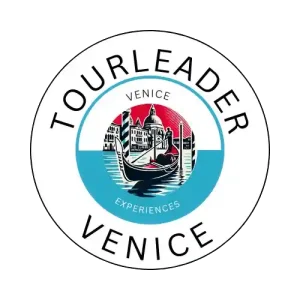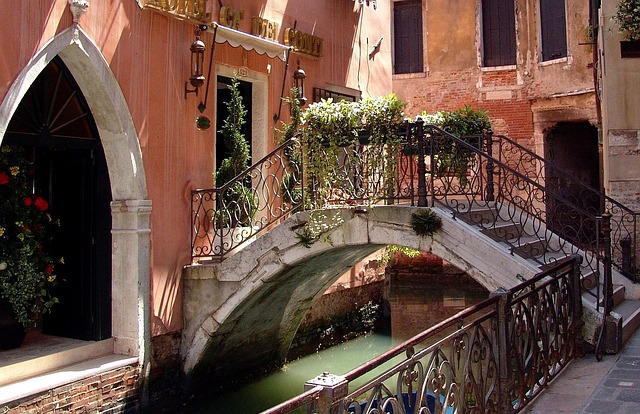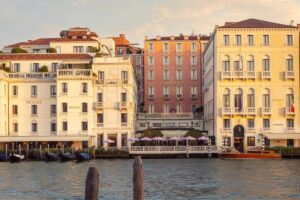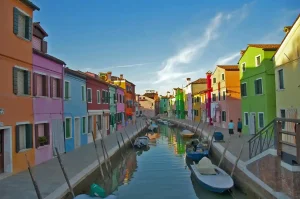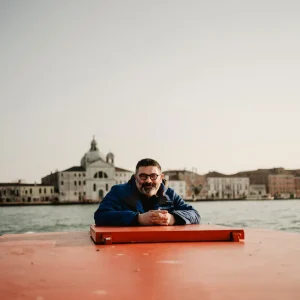Castello Venice Guide — History, Hidden Gems & Authentic Experiences | Tour Leader Venice
In a city of iconic landmarks and packed piazzas, the district of Castello offers something quieter, deeper and beautifully under-visited. Located at the eastern edge of Venice’s historic centre, this is not just another “tourist zone”—it is a neighbourhood of craftsmen, ship-builders, monks, marshes, palaces and gardens. It is where the working heart of La Serenissima once beat.
At Tour Leader Venice, we believe that to truly know Venice you must move beyond the grand canal views and step into its districts—each one a story, each one a flavour. Castello is the largest of the city’s six historic sestieri, yet paradoxically the most quietly potent in its sense of place. Through its alleyways, gardens, shipyard walls and churches, you will find the essence of Venice: the interplay of sea and stone, of empire and everyday life, of art and industry.
This guide will walk you through Castello’s layered history, outline what to see and do with luxury-travel insight, highlight where to go and stay, and explain why Castello should feature high on your Venetian itinerary. Finally, you’ll find three FAQs crafted for Rank Math and your blog schema.
The Origins & Evolution of Castello
The story of Castello begins with its geography. Settled early because of its position at the edge of the lagoon, the district encompasses the island of San Pietro di Castello (formerly Olivolo) and stretches toward the sea and toward the centre of Venice. Its name, “Castello,” hints at a fortress (“castle”)—though the physical castle has long since disappeared—leaving behind the memory of fortifications and defences. :contentReference[oaicite:2]{index=2}
By the 12th century the area had already become central to Venice’s naval ambitions. The famous Arsenale di Venezia (the Arsenal) was founded here in 1104, expanding over the centuries into a massive naval shipyard and armament centre that employed thousands. :contentReference[oaicite:4]{index=4} This ship-building complex became one of the republic’s most important industrial engines—without it, the maritime power of Venice could never have been what it was.
Churches and monastic precincts also shaped Castello’s identity. The island of San Pietro di Castello served for many centuries as the seat of the Bishop of Venice and held vital ecclesiastical importance. :contentReference[oaicite:5]{index=5} Over time, community, craft, commerce, faith and industry all intertwined here.
What makes Castello fascinating is that many of its major transformations mirrored the fortunes of Venice itself: rising power, maritime triumphs, shifting trade routes, then decline and reinvention. As tourism surged in San Marco and Rialto, Castello retained a quieter pulse—one favoured by locals, craftsmen and thoughtful travellers alike. :contentReference[oaicite:6]{index=6}
Why Castello Is Special
In choosing Castello for a luxury-travel article, several qualities stand out:
- Authenticity & scale: It is Venice’s largest district and still one of its most lived-in. It combines grand scale (especially in the Arsenal and waterfront) with neighbourhood intimacy. :contentReference[oaicite:7]{index=7}
- Maritime legacy: Few districts carry as much of the story of Venice’s naval empire. The walls of the Arsenal, the docks, the worker’s quarters—they all speak of power built on wood, rope and sea. :contentReference[oaicite:8]{index=8}
- Light, water & green space: The lagoon-edge promenades (such as Riva degli Schiavoni), the gardens of the Biennale, and the more open canals allow a sense of air and space rare in central Venice. :contentReference[oaicite:9]{index=9}
- Less-crowded, high-value experience: Because many visitors concentrate on San Marco and the Grand Canal, Castello offers quieter streets, fewer audio-guides and more room to breathe—perfect for luxury travellers seeking calm. :contentReference[oaicite:10]{index=10}
Put simply: Castello gives you Venice’s grandeur, but with an everyday story underneath—and that combination is increasingly rare, increasingly refined.
What to See & Do in Castello
Here we present a refined yet comprehensive list of experiences—some must-see, some hidden, all suited to the luxury-travel mindset.
Major Landmarks & Must-Visits
Basilica di San Pietro di Castello – The former cathedral of Venice, this church occupies the island of San Pietro and retains a serene dignity away from the crowds. Its leaning bell-tower was designed by Andrea Palladio. :contentReference[oaicite:12]{index=12}
Arsenale di Venezia – Walk the red brick walls and massive gates of the Arsenal, once the heart of the Venetian navy. Today parts are open for cultural events, exhibitions and the Venice Biennale. :contentReference[oaicite:13]{index=13}
Riva degli Schiavoni – A waterfront promenade stretching from the Doge’s Palace toward Castello, offering lagoon views, historic palaces and quiet cafes. :contentReference[oaicite:14]{index=14}
Giardini della Biennale – The green lung of Venice, hosting the contemporary art and architecture Biennale, and offering a tranquil escape from urban density. :contentReference[oaicite:15]{index=15}
Refined Experiences & Hidden Corners
Via Garibaldi – One of the few broader boulevards in Venice, running east toward the lagoon fringe. Enjoy artisan workshops, local trattorias and real Venetian life. :contentReference[oaicite:16]{index=16}
Scuola di San Giorgio degli Schiavoni – Tucked away just off the waterfront, this school houses remarkable frescoes by Carpaccio and less-crowded artworks worth the visit. :contentReference[oaicite:17]{index=17}
Island of Sant’Elena – Reachable via a peaceful walk or boat ride, this green islet at Castello’s edge offers a surprising sense of calm, local life and lagoon light. :contentReference[oaicite:18]{index=18}
Luxury & Private Travel Enhancements
- Arrange a private early-morning boat ride into the Arsenal precinct—before the public arrives—for golden-hour brick walls and water reflections.
- Book a private art-guide tour through the smaller churches of Castello (e.g., San Zaccaria) with skip-the-line access and reserved seating. :contentReference[oaicite:19]{index=19}
- In the evening, dine at a restored palazzo near Via Garibaldi, followed by a stroll to a lagoon-edge bar on Riva degli Schiavoni—quiet, elegant, beautifully Venetian.
Where to Go & Where to Stay in Castello
Choosing to stay in Castello means opting for calm, authenticity and elegance. Here are some suggestions and things to think about:
Best Zones Within Castello
- Near the Arsenal & Giardini della Biennale: Great for art-lovers and longer stays—quiet yet connected.
- Riva degli Schiavoni waterfront: Closest to San Marco but with more serenity in the evenings.
- Via Garibaldi & East Lagoon Fringe: Local life, less tourist traffic, a sense of calm residential Venice.
Accommodation Style & Recommendation Opt for a boutique palazzo converted into a luxury hotel, located away from the main tourist arteries but still a few minutes by private boat from the Doge’s Palace. Ask for a room with lagoon view if possible. Many of our Tour Leader Venice clients favour Castello for this very reason: full Venice immersion with space and elegance.
Dining & Drink Highlights In Castello you’ll find a mix of refined trattorias and hidden wine bars (bacari) where locals linger. For instance: a lobster risotto overlooking Sant’Elena; a signature cocktail at a rooftop bar facing the lagoon; a traditional cicchetti crawl in Via Garibaldi followed by a private water-taxi back to your hotel. Combine this with one of our curated food-&-wine tours for a fully elevated experience.
Practical Travel Tips for Castello
Here’s how to travel smart in Castello, particularly for luxury travellers:
- Best Time to Visit: Early morning or late afternoon when light bathes the Arsenal walls and the public crowds thin out. Spring (April-June) and early autumn (September) offer beautiful weather and fewer tourists. :contentReference[oaicite:20]{index=20}
- Transport: The district is walkable, but for maximum comfort book a private boat transfer. Public vaporetti (lines 4.1/5.1) serve Castello, though with luggage and luxury standards a private option is recommended. :contentReference[oaicite:21]{index=21}
- Etiquette: Many of the smaller churches and craft-workshops are still part of working communities—dress appropriately, speak softly, book ahead for private access.
- Photography & Light: The lagoon-edge and Arsenal walls offer stunning morning or sunset light. Use your private guide to reach vantage points before the general public arrives.
Interpretation & Luxury-Travel Context
What defines a luxury travel experience in Castello isn’t simply five-star hotels or fine dining (though those are available), but the ability to move beyond the standard itinerary. A luxury stay here might begin with a dawn boat ride through deserted arches of the Arsenal, then a private tutorial with a Venetian mask-maker in Via Garibaldi, followed by lunch on the lagoon and a rooftop aperitivo as the sun sets over the Giardini della Biennale.
At Tour Leader Venice we craft these moments: layered, quiet, meaningful. Castello becomes not just a place you stay, but a story you live. Because luxury today isn’t about being seen—it’s about being immersed.
In Closing
When you’ve walked through the alleyways of Castello, watched the red-brick walls of the Arsenal shimmer in late afternoon light, heard the quiet of lagoon side promenades, and tasted the rich flavours of local cuisine in a genuine trattoria—then you’ll feel Venice differently. Not as a collection of icons—but as a living, breathing masterpiece.
Castello invites you not just to visit—but to belong. And to return home carrying memory, not only photographs.
Ready to explore Venice differently? Let us at Tour Leader Venice design your bespoke Castello experience—private guide, exclusive boat ride, local artisans, and the corners most visitors never reach.
Frequently Asked Questions
What part of Castello is best for luxury accommodation?
For a refined stay with access and calm, look toward the lagoon-edge near Sant Elena or the quieter canals near Via Garibaldi. These zones offer boutique palazzi with authentic Venetian atmosphere, fewer crowds, and easy reach of the main sights.
How much time should I allocate to exploring Castello?
Ideally one full day allows a deep-dive: morning at San Pietro di Castello and the Arsenal, lunch by the lagoon, afternoon in Via Garibaldi and Giardini della Biennale, evening along Riva degli Schiavoni at sunset. For true immersion, consider two nights so you can move intentionally rather than rush.
Why isn’t Castello as crowded as other parts of Venice?
Because most visitors focus on the Grand Canal bend, Rialto and San Marco. Castello stretches outward and historically was a working zone (naval, shipyard, residential) rather than a parade of palaces. That makes it ideal today for travellers seeking elegance rather than spectacle.
